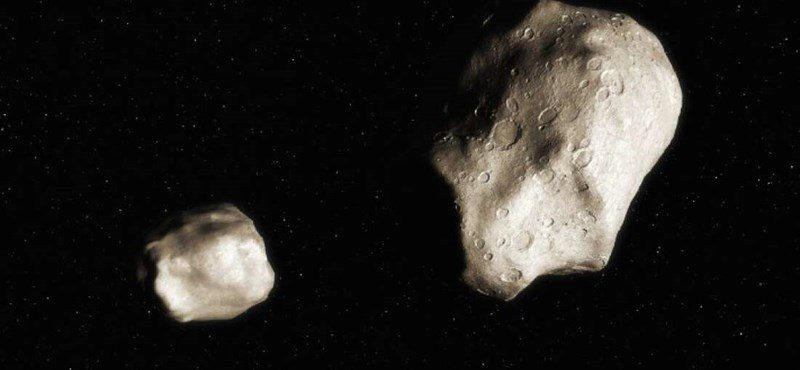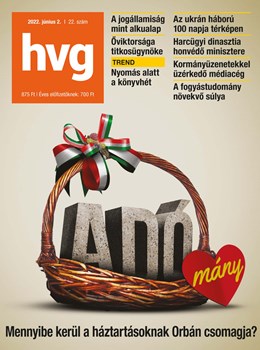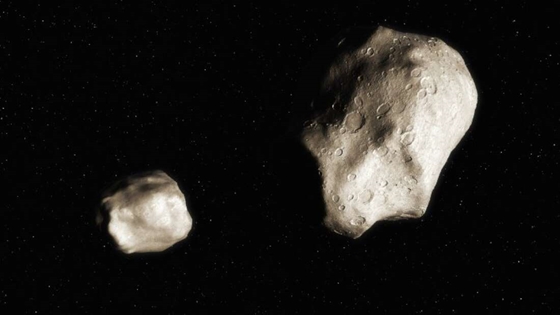[{“available”:true,”c_guid”:”1213f3ad-724b-4834-8fc5-b7d39ced4830″,”c_author”:”hvg.hu”,”category”:”itthon”,”description”:”Nagy értékű gépkocsikkal csalhatott. “,”shortLead”:”Nagy értékű gépkocsikkal csalhatott. “,”id”:”20220603_megasztar_fekete_david_letartoztatas_csalas”,”image”:”https://api.hvg.hu/Img/ffdb5e3a-e632-4abc-b367-3d9b3bb5573b/1213f3ad-724b-4834-8fc5-b7d39ced4830.jpg”,”index”:0,”item”:”53512f6d-fd3a-4a60-92f1-ae5fbcf8d982″,”keywords”:null,”link”:”/itthon/20220603_megasztar_fekete_david_letartoztatas_csalas”,”timestamp”:”2022. június. 03. 17:48″,”title”:”Ismét letartóztatták a csalással gyanúsított Fekete Dávidot”,”trackingCode”:”RELATED”,”c_isbrandchannel”:false,”c_isbrandcontent”:false,”c_isbrandstory”:false,”c_isbrandcontentorbrandstory”:false,”c_isbranded”:false,”c_ishvg360article”:false,”c_partnername”:null,”c_partnerlogo”:”00000000-0000-0000-0000-000000000000″,”c_partnertag”:null},{“available”:true,”c_guid”:”8df5edff-6f67-4831-b620-559fbf51be6b”,”c_author”:”hvg.hu”,”category”:”itthon”,”description”:”A Hegyvidék képviselője emellett 650 ezer forintot tart takarékbetétben, derül ki a vagyonnyilatkozatából.”,”shortLead”:”A Hegyvidék képviselője emellett 650 ezer forintot tart takarékbetétben, derül ki a vagyonnyilatkozatából.”,”id”:”20220602_16_millios_hitele_van_Hajnal_Miklosnak”,”image”:”https://api.hvg.hu/Img/ffdb5e3a-e632-4abc-b367-3d9b3bb5573b/8df5edff-6f67-4831-b620-559fbf51be6b.jpg”,”index”:0,”item”:”375e0f8b-7034-4ce0-8485-76fe1cd95794″,”keywords”:null,”link”:”/itthon/20220602_16_millios_hitele_van_Hajnal_Miklosnak”,”timestamp”:”2022. június. 02. 08:57″,”title”:”16 milliós hitele van Hajnal Miklósnak”,”trackingCode”:”RELATED”,”c_isbrandchannel”:false,”c_isbrandcontent”:false,”c_isbrandstory”:false,”c_isbrandcontentorbrandstory”:false,”c_isbranded”:false,”c_ishvg360article”:false,”c_partnername”:null,”c_partnerlogo”:”00000000-0000-0000-0000-000000000000″,”c_partnertag”:null},{“available”:true,”c_guid”:”95cf6f1e-c371-4ce9-b586-b7ce900aea6d”,”c_author”:”hvg.hu”,”category”:”tudomany”,”description”:”Egy néhány évtizeddel ezelőtt készült űrfotó feladta a leckét korunk szakértőinek, mivel nem tudják megmagyarázni, hogyan lehetséges az, ami rajta van.”,”shortLead”:”Egy néhány évtizeddel ezelőtt készült űrfotó feladta a leckét korunk szakértőinek, mivel nem tudják megmagyarázni…”,”id”:”20220602_kutatok_csillagaszat_csillagasz_urkutatas_foto_fenyforras”,”image”:”https://api.hvg.hu/Img/ffdb5e3a-e632-4abc-b367-3d9b3bb5573b/95cf6f1e-c371-4ce9-b586-b7ce900aea6d.jpg”,”index”:0,”item”:”786a95a4-1461-4feb-81b7-41f88168970d”,”keywords”:null,”link”:”/tudomany/20220602_kutatok_csillagaszat_csillagasz_urkutatas_foto_fenyforras”,”timestamp”:”2022. június. 02. 08:03″,”title”:”70 éves csillagászati fotó miatt jöttek izgalomba a kutatók: van rajta valami, ami később már hiányzik”,”trackingCode”:”RELATED”,”c_isbrandchannel”:false,”c_isbrandcontent”:false,”c_isbrandstory”:false,”c_isbrandcontentorbrandstory”:false,”c_isbranded”:false,”c_ishvg360article”:false,”c_partnername”:null,”c_partnerlogo”:”00000000-0000-0000-0000-000000000000″,”c_partnertag”:null},{“available”:true,”c_guid”:”9c022115-ae7d-49dd-b530-175d896714ef”,”c_author”:”MTI”,”category”:”gazdasag”,”description”:”A jelenlegi környezeti feltételek mellett az idei első negyedévben a hazai bankszektor jövedelemtermelése megszűnt; az újabb extra adóterhek kivetését a magyar bankszektor ellenzi – közölte a Magyar Bankszövetség pénteken az MTI-vel.”,”shortLead”:”A jelenlegi környezeti feltételek mellett az idei első negyedévben a hazai bankszektor jövedelemtermelése megszűnt…”,”id”:”20220603_Ellenzi_a_Magyar_Bankszovetseg_az_ujabb_banki_kulonadot”,”image”:”https://api.hvg.hu/Img/ffdb5e3a-e632-4abc-b367-3d9b3bb5573b/9c022115-ae7d-49dd-b530-175d896714ef.jpg”,”index”:0,”item”:”925c8550-4258-49db-9df4-c468842981e4″,”keywords”:null,”link”:”/gazdasag/20220603_Ellenzi_a_Magyar_Bankszovetseg_az_ujabb_banki_kulonadot”,”timestamp”:”2022. június. 03. 10:06″,”title”:”Ellenzi a Magyar Bankszövetség az újabb banki különadót”,”trackingCode”:”RELATED”,”c_isbrandchannel”:false,”c_isbrandcontent”:false,”c_isbrandstory”:false,”c_isbrandcontentorbrandstory”:false,”c_isbranded”:false,”c_ishvg360article”:false,”c_partnername”:null,”c_partnerlogo”:”00000000-0000-0000-0000-000000000000″,”c_partnertag”:null},{“available”:true,”c_guid”:”d470e8c2-0fe4-417d-9306-015b5d0265ca”,”c_author”:”Marabu”,”category”:”itthon”,”description”:””,”shortLead”:””,”id”:”20220602_Marabu_Feknyuz_Extraprofit”,”image”:”https://api.hvg.hu/Img/ffdb5e3a-e632-4abc-b367-3d9b3bb5573b/d470e8c2-0fe4-417d-9306-015b5d0265ca.jpg”,”index”:0,”item”:”82a5a79c-d75e-412e-8b0a-1c842b8e1e4b”,”keywords”:null,”link”:”/itthon/20220602_Marabu_Feknyuz_Extraprofit”,”timestamp”:”2022. június. 02. 14:55″,”title”:”Marabu Féknyúz: Extraprofit”,”trackingCode”:”RELATED”,”c_isbrandchannel”:false,”c_isbrandcontent”:false,”c_isbrandstory”:false,”c_isbrandcontentorbrandstory”:false,”c_isbranded”:false,”c_ishvg360article”:false,”c_partnername”:null,”c_partnerlogo”:”00000000-0000-0000-0000-000000000000″,”c_partnertag”:null},{“available”:true,”c_guid”:”a7397c5b-022c-4511-ae70-2d970b2a05da”,”c_author”:”hvg.hu”,”category”:”tudomany”,”description”:”A Himawari-8 műhold feladata, hogy az időjárásról szolgáltasson adatokat a Földre, ám az egyik megfigyelés alkalmával véletlenül azt is rögzítette, mi történt tőlünk 724 fényévre.”,”shortLead”:”A Himawari-8 műhold feladata, hogy az időjárásról szolgáltasson adatokat a Földre, ám az egyik megfigyelés alkalmával…”,”id”:”20220602_betelgeuze_csillag_urkutatas_muhold_himawari_8″,”image”:”https://api.hvg.hu/Img/ffdb5e3a-e632-4abc-b367-3d9b3bb5573b/a7397c5b-022c-4511-ae70-2d970b2a05da.jpg”,”index”:0,”item”:”c4926ca6-4aa8-433b-9983-01ffea7c5b40″,”keywords”:null,”link”:”/tudomany/20220602_betelgeuze_csillag_urkutatas_muhold_himawari_8″,”timestamp”:”2022. június. 02. 13:03″,”title”:”Nem értették, miért halványodott el hirtelen a fényes csillag, most megvan a magyarázat”,”trackingCode”:”RELATED”,”c_isbrandchannel”:false,”c_isbrandcontent”:false,”c_isbrandstory”:false,”c_isbrandcontentorbrandstory”:false,”c_isbranded”:false,”c_ishvg360article”:false,”c_partnername”:null,”c_partnerlogo”:”00000000-0000-0000-0000-000000000000″,”c_partnertag”:null},{“available”:true,”c_guid”:”d3e898ce-f9ab-455d-9ec8-024ee998985e”,”c_author”:”hvg.hu”,”category”:”tudomany”,”description”:”A szerda esti ítélethirdetés óta már több mint 2,4 millió új követője lett Johnny Depp Instagram-oldalának, az ítélet után kiadott közleményét pedig majdnem 14 millióan kedvelték.”,”shortLead”:”A szerda esti ítélethirdetés óta már több mint 2,4 millió új követője lett Johnny Depp Instagram-oldalának, az ítélet…”,”id”:”20220602_johnny_depp_ragalmazasi_per_itelet_amber_heard_instagram”,”image”:”https://api.hvg.hu/Img/ffdb5e3a-e632-4abc-b367-3d9b3bb5573b/d3e898ce-f9ab-455d-9ec8-024ee998985e.jpg”,”index”:0,”item”:”77e637ce-26c0-441a-812c-c394ab89b200″,”keywords”:null,”link”:”/tudomany/20220602_johnny_depp_ragalmazasi_per_itelet_amber_heard_instagram”,”timestamp”:”2022. június. 02. 08:33″,”title”:”Ítélethirdetés után: özönlenek a kommentek és az új követők Johnny Depp Instagram-oldalára”,”trackingCode”:”RELATED”,”c_isbrandchannel”:false,”c_isbrandcontent”:false,”c_isbrandstory”:false,”c_isbrandcontentorbrandstory”:false,”c_isbranded”:false,”c_ishvg360article”:false,”c_partnername”:null,”c_partnerlogo”:”00000000-0000-0000-0000-000000000000″,”c_partnertag”:null},{“available”:true,”c_guid”:”d9f7af44-48e4-4094-84a7-85c31d6befe9″,”c_author”:”Gyenis Ágnes”,”category”:”360″,”description”:”Egyre súlyosabb gondokkal, megugró költségekkel, mindenre kiterjedő bizonytalansággal küzdenek az orosz és az ukrán piacokon érdekelt magyar vállalkozások, miközben a külkereskedelmet az adófizetők kontójára ösztönző Exim-csoport alig vár veszteséget.”,”shortLead”:”Egyre súlyosabb gondokkal, megugró költségekkel, mindenre kiterjedő bizonytalansággal küzdenek az orosz és az ukrán…”,”id”:”202222__eximcsoport__allami_helytallas__hruscsov_es_avetomag__kibiztositott_kovetelesek”,”image”:”https://api.hvg.hu/Img/ffdb5e3a-e632-4abc-b367-3d9b3bb5573b/d9f7af44-48e4-4094-84a7-85c31d6befe9.jpg”,”index”:0,”item”:”52b15554-68fa-4abf-acaa-5e5373a96d84″,”keywords”:null,”link”:”/360/202222__eximcsoport__allami_helytallas__hruscsov_es_avetomag__kibiztositott_kovetelesek”,”timestamp”:”2022. június. 03. 07:00″,”title”:”Mihez kezdenek a magyar cégek Oroszországban és Ukrajnában? Ki segít rajtuk?”,”trackingCode”:”RELATED”,”c_isbrandchannel”:false,”c_isbrandcontent”:false,”c_isbrandstory”:false,”c_isbrandcontentorbrandstory”:false,”c_isbranded”:false,”c_ishvg360article”:true,”c_partnername”:null,”c_partnerlogo”:”00000000-0000-0000-0000-000000000000″,”c_partnertag”:null}]


Order HVG weekly on paper or digital and read us anywhere, anytime!
That’s why we ask you, our readers, to support us! We promise to continue to give you the best we can!
Recommended from the first page













































